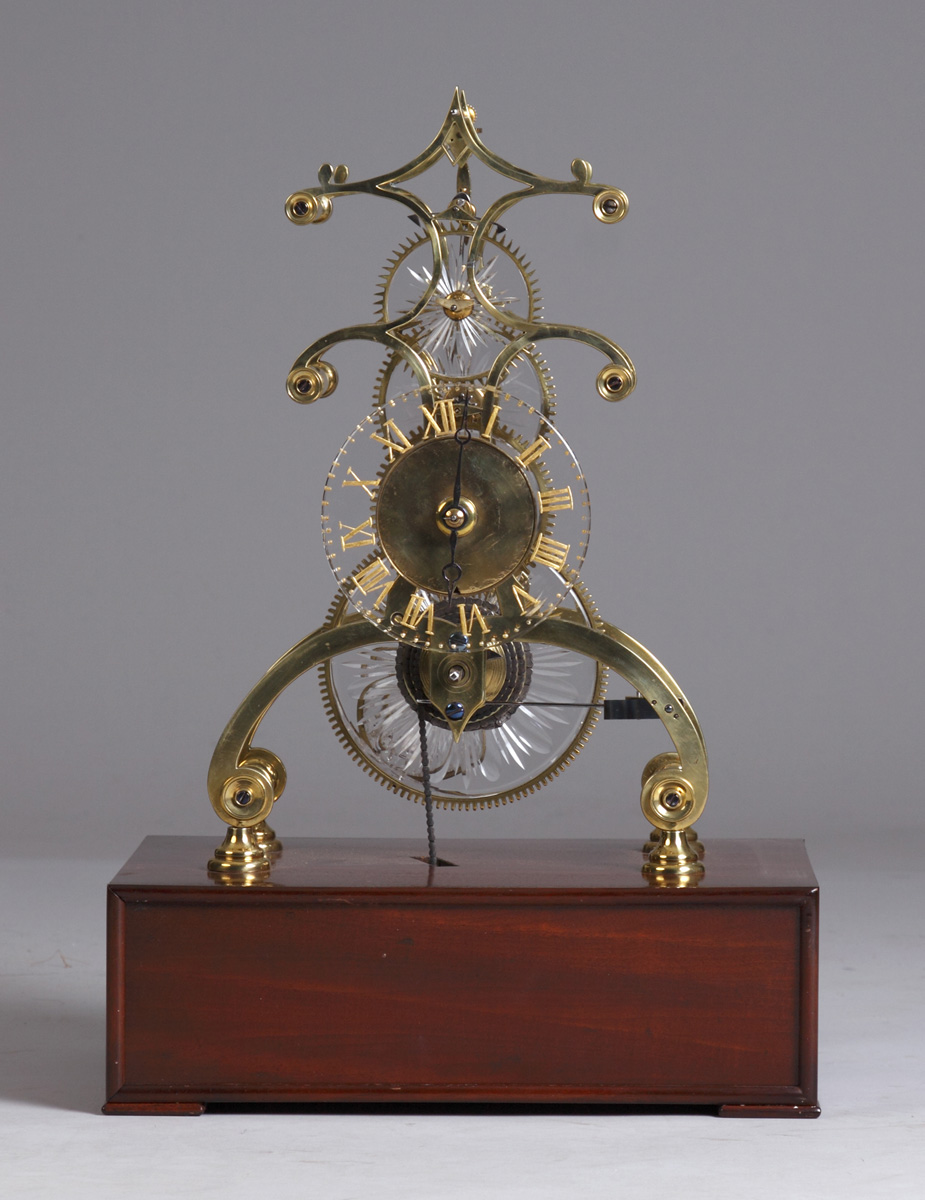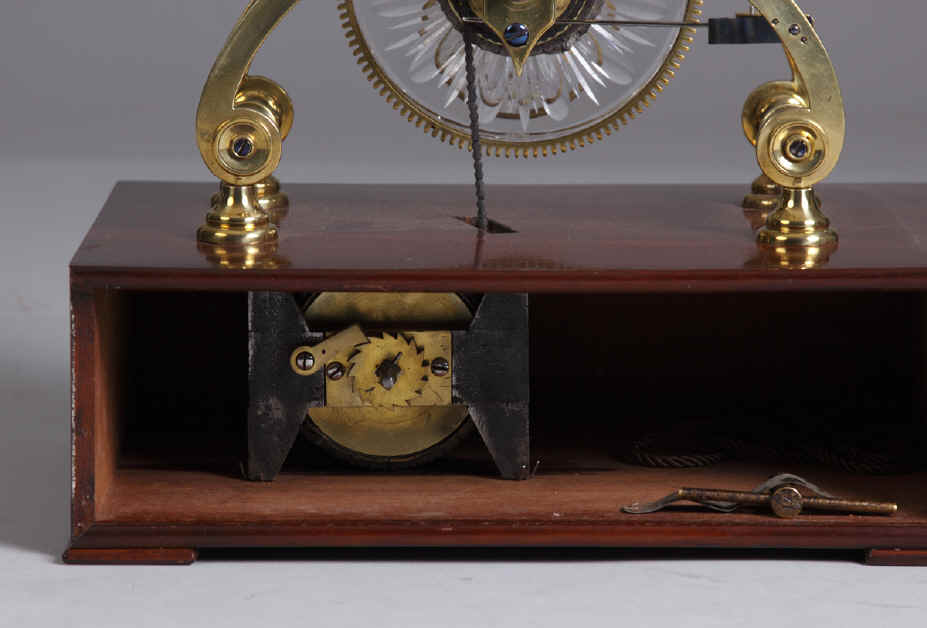|
Maker, James Edwards, Stourbridge, England, c. 1840. Movement net 16"h x 10.5"w x 6.5"d, overall with base 21"h x 14.5"w x 11.25"d. Anchor escapement. Eight day duration. Click on the picture to go to a page for more detail. This is an example of an original James Edwards flint glass skeleton clock also known at the time as a 'transparent clock'. Like many early skeleton clock makers, James Edwards standardized on one basic frame design and used it with minor modifications on all of his clocks. His clocks predate the major English makers of Evans and Smith by some fifteen years. The majority of his clocks were simple timepieces with the occasional two train with the hour strike on a bell mounted above the frame. He is best known for his glass wheeled clocks, several of which were entered in the Great London Exhibition of 1851. In many ways Edwards' clocks, like those of James Condliff who was working around the same time in Liverpool, epitomized the Victorian era in being not only beautifully made but also showing great originality and ingenuity and being spectacular to look at. The principal feature of Edwards' clocks was the cut flint glass centers of the wheelworks; the largest being 6 inches (15 cm) in diameter. The term flint derives from the flint nodules found in the chalk deposits of southeast England, near Stourbridge, that were used as a source of high purity silica to produce a potash lead glass that was the precursor to English lead crystal. Other interesting features unique to this clock were: a) So as not to mar the overall appearance and possibly to add a little air of mystery, the mainspring was concealed in the wooden box on which the clock rested. It is peculiar that the dome simply rested on the box's flat surface; with no engraved groove or raised lip to locate the dome's edge. Interestingly there is another glass wheeled clock thought be be of a later date, and of a slightly different design by Edwards that does have such a wooden locating lip on the top of the wooden box. b) Because it would have been difficult to drill through the cut glass bob, and this would certainly have marred its appearance, the pendulum is adjusted by a mechanism from above the suspension spring. c) On his earlier clocks, as in this example, the fusee was held in position by independent plates screwed to the front and rear frames allowing removal of the fusee without dismantling the clock. d) The motion work was concealed in a drum situated behind the dial, presumably so that no conventional wheelwork could be seen. e) Edwards positioned the wheels one behind the other so as to display them as attractively as possible and not, as on most clocks, by placing the third wheel just behind the front plate. 1. It is interesting to note the only other two known examples of this type of clock appear on the front cover of Skeleton Clocks, F.B. Royer-Collard and on pg. 41-44 as well as in British Skeleton Clocks, Derek Roberts, pg. 175-178. At first blush it would appear that these are two separate examples. The obvious difference is the small decal insignia on the front of the wood base in Roberts' book and attributed to Major Anthony Heathcote's collection. However a careful review of the grain on the wood base as well as various casting flaws on the front main frame plate reveal that these are both the same clock. My example has a different base because the clock had taken a fall. The base and dial were replaced (which I cannot understand why one would not have repaired the base) as well as some parts of the frame needed to be mended. But if one again looks closely at the frame its casting flaws match exactly those of both examples described above. Could this be the same clock? Are there two or only one known example left? If anyone who knows of an original clock of this model, I'd like to know. Gene Chrestensen had made and sold close copies of this clock in the 1980's. But the differences in the feet, style and attachment of the fusee stop and other subtle differences in the frame style make those identifiable from the original. Provenance: Cottone Auctions, June 25, 201 , lot#23. 1. British Skeleton Clocks, Derek Roberts, pp.175-178
|

